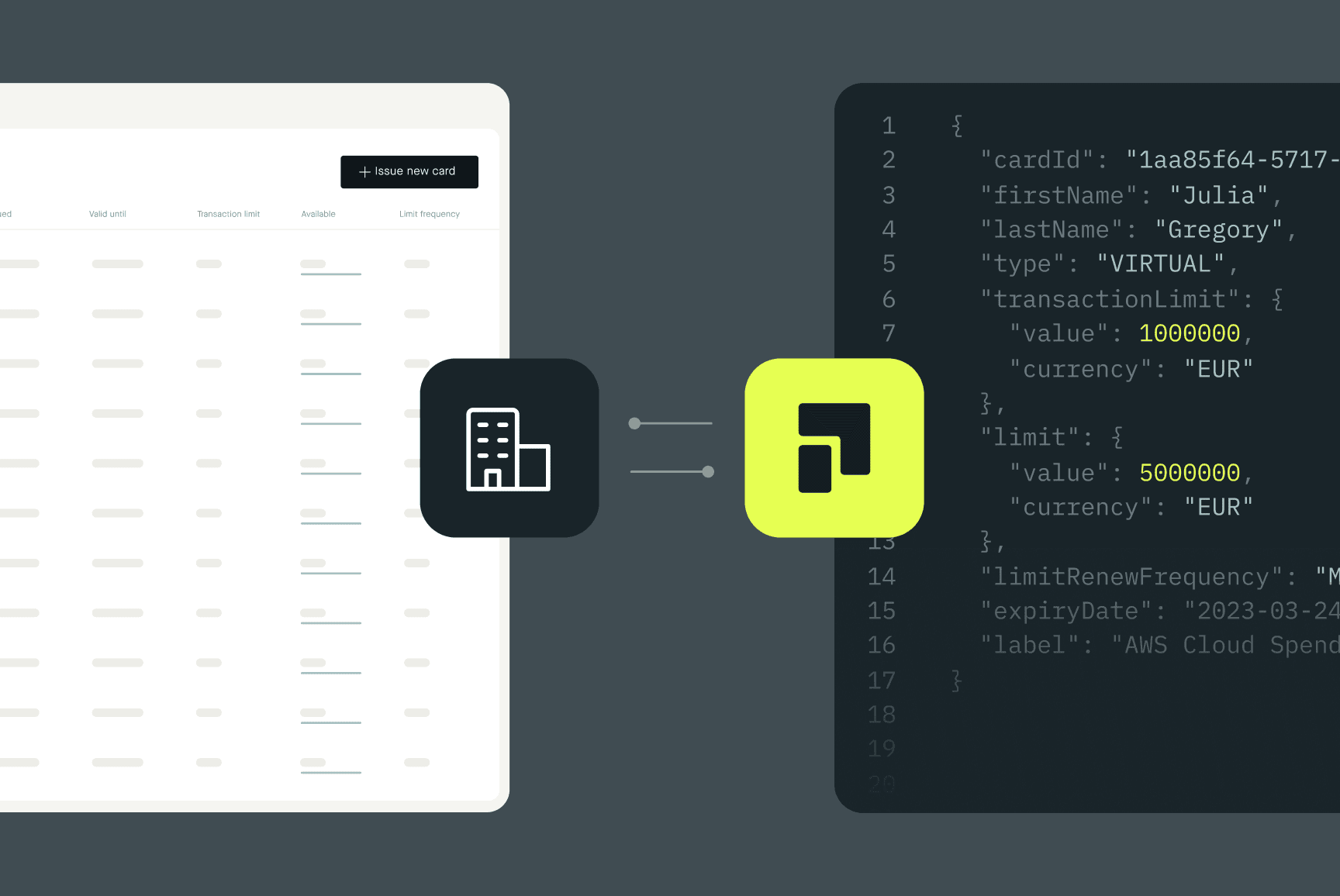What is NIRP and how does it affect corporate deposits?
In 2023, while the European Central Bank is raising its target interest rates, negative interest rates might seem like a distant reality. But it was only recently that they were still perfectly normal. Learn everything about negative interest rate policy (NIRP) and how your business can avoid losing money if times of negative interest rates return.


What is a negative interest rate?
Let’s start with the basics of lending. When you take out a loan, you become a debtor and you pay interest to the creditor. Let’s say that your business needs a loan to make a large purchase. On top of the loaned money, your business will pay interest. You could think of the interest as the price of the loan.
But when interest rates are negative, this principle is reversed.
Banks often pay interest for money deposited in their accounts. Because when you deposit money into your account, you’re actually lending it to your bank. The money in your account will accrue interest so you earn a little extra on top of your savings.
But this is not the case with negative interest rates. When interest rates are negative, the bank won’t pay you interest. On the contrary: you might have to pay the bank for storing your money.
What is NIRP?
NIRP stands for Negative Interest Rate Policy. It’s one of the monetary tools in a central bank's kit. When a central bank sets its target interest rate below zero, it’s deploying NIRP.
How does NIRP work?
When a central bank drops its target interest rate below zero, it means that a financial institution, like a commercial bank, that wants to deposit funds in the central bank now has to pay interest to it. Although there are other options for storing capital, depositing money in the central bank is still the safest and most convenient solution for financial institutions.
NIRP might sound like a lucrative money-making scheme for the central bank, but that’s not the point. With negative interest rates, the central bank wants to encourage lending and borrowing, spending and investments and this way boost the economy. We usually see NIRP during a recession and economically difficult times.
After the 2008 financial crisis, many central banks instated NIRP to make sure money was circulating in the economy and not lying in bank accounts.
Negative interest rates pass down to corporate deposits
When a central bank drops its interest rate, this trickles down to local banks.
Eventually, in theory, individuals and businesses would pay interest to their banks for keeping money in their private or business accounts. But according to the 2020 article in the ECB Economic Bulletin, retail banks are reluctant to charge negative interest from their private customers.
However, corporate customers are a different story. Many banks passed the negative interest rate down to their business customers.
NIRP internationally and in Germany
Negative interest rate policy is a drastic monetary measure. After the 2008 financial crisis, many central banks in Europe deployed NIRP in an effort to stimulate the economy. And it wasn’t just Europe. The Japanese central bank lowered the interest rate as well. In many parts of the world, even if the rates didn’t go negative, they dropped to zero or close to it.
For a long time, the European Central Bank (ECB) kept interest rates low. From 2014 to 2022 the ECB’s interest rate for deposit facility was negative.
The ECB’s rate level is reflected in the German market because the German central bank (Deutsche Bundesbank) follows the ECB’s target rates.
Now, in 2023, interest rates have climbed back to positive digits as the ECB tries to control inflation. You can find the European Central Bank’s target interest rates here.
What is the interest rate in Germany in 2023?
Germany is part of the EU and eurozone, and consequently, it follows the ECB’s target rates.
The German central bank has raised the basic interest rate rapidly in 2022 and 2023, going from -0.88% to the current of 1.62% at the time of writing this article in early 2023.

Pros and cons: who benefits from negative interest rates and who loses?
When interest rates are negative, it usually means that interests on loans are also low. Negative interest rates benefit borrowers because they keep the cost of loans cheap.
On the other hand, they are harmful to individuals and businesses that keep large sums of money in their bank accounts.
Concerns have been raised that negative interest rates might harm banks’ profitability. Banks are unwilling (or unable, due to legislative hurdles) to pass on the negative interest rate to their customers but they still have to pay negative interest to the central bank.
A business might have to pay negative interest for a balance of just €1
Until recently, negative interest rates were quite normal. It didn’t necessarily mean that a bank would charge interest on deposits, but unlike years before, they wouldn’t pay interest on deposited money either.
But it wasn’t unusual that banks did charge a negative interest from their corporate customers.
According to the previously mentioned ECB article, it was “a relatively widespread phenomenon” that negative interest rates were passed down to corporate deposits. The 2022 paper by the Deutsche Bundesbank suggested that up to approximately 50% of German corporate deposits remunerated negative interest. The number was higher than the European average.
In Germany, back in 2021, also the thresholds for charging negative interest were going down. Before, negative interest was usually charged only from deposits larger than 250,000 euros. But many banks had lowered the limit to 25,000 euros or even less. With some banks, negative interest was even charged from the very first euro.
These are the effects negative interest rates can have on your business
While interest rates in Europe are above zero now, we can’t predict the future.
If interest rates turn negative and you store large sums of money in your business account, your business ends up with less capital simply by keeping it in the account. On top of the interest, you also pay the usual account management fees and commissions.
How to calculate a negative interest rate
You can easily calculate how much money you’ll lose if you exceed your bank’s threshold for charging negative interest.
Example
Let's assume you have an account balance of 100,000 euros. Your bank charges 0.5% negative interest. You can calculate the monthly cost as follows:
(100,000 x 0.005) / 360 x 30 = 41.67
According to this, you would lose 41.67 euros in one month and would only have 99,958.33 euros from your original 100,000 euros.

How to avoid losing money to negative interest
First off: right now, in 2023, you’re probably safe. The world is unpredictable, but right now the interest level in Europe is higher than it’s been in more than ten years.
But generally speaking, when interest rates drop below zero, you don’t have to just accept the loss of money. There are ways to avoid the cost of negative interest.
Find a different bank
First, you could switch to a bank that doesn't charge negative interest. Even when the interest rates were at an all-time low, many banks didn’t charge interest from their corporate customers.
Try a money market account
You can also transfer your reserves to a money market account (MMA, in German Tagesgeldkonto). It’s an account that usually pays a higher interest than a current or savings account. When interest rates are low, there are no high returns to be made on a money market account either. But at least you don't pay negative interest.
A money market account shouldn't be a permanent solution for large sums. When interest rates are low, your deposit will gradually decrease due to inflation. Therefore, it’s better to spread larger amounts among several banks or invest part of the money.
Keep your money on the move with Pliant business credit cards
Another way to avoid, or at least reduce, negative interest is to use Pliant corporate credit cards.
With a corporate credit card, you can make payments fast, instead of making purchases on account with a long payment term. And with a Pliant credit card, you can choose whether you want to pay your credit card bill monthly, weekly, or even daily.
This saves you money through faster payments, which reduces the capital in your account and thus the negative interest to be paid. What’s more, you can collect generous cashback on your transactions. This way you save twice. Win-win.
Ready to learn more about Pliant business credit cards? Book a demo.






